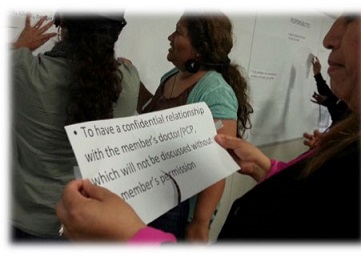[SPEAKER]
Our last topic under CHW training and education is a brief review of current thinking on instructional models.
Most CHWs are in their 30s and 40s, and many are older, so successful training for CHW candidates should follow basic principles of adult learning. Further, many CHWs have had limited success in conventional K–12 education, so most CHW training avoids a lecture, reading, and exam format. One of the earliest successful community college programs for CHWs, in San Francisco, pioneered the use of performance-based assessment for student evaluation. The program’s “standards-of- practice manual” has been studied by many CHW curriculum developers.
Some experts in the CHW field advocate the use of the “popular education” methods pioneered by Paolo Freire in Brazil, which employ a structured process of group problem solving to address the root causes of community problems. Some have argued that a solid grounding in this methodology is good preparation for CHWs working with groups of community members to solve community problems. Groups of experts in New York City and in Portland, Oregon, specialize in popular education with CHWs.
Reflecting the preceding points, an instructor in a CHW training program may find it most productive to model the CHW’s presence in the community, and act more as a facilitator than an authority, encouraging cooperative learning and problem solving, and serving as a role model for the relationship the CHW will have with community members.
Community colleges can be an important avenue of educational opportunity for CHWs, in part because they can be a stepping stone to higher education, and because they emphasize workforce development. Their ability to award academic credit is attractive to many CHWs; they are able to access funding for workforce development; and they can also offer continuing education credits. However, even the modest admission requirements of most community college systems may present a barrier to some CHWs. The ability to offer the same courses on a non-credit basis, found in some college systems, can help address this barrier to entry.
And finally, an apprenticeship can be an appropriate model for CHW education. Some apprenticeship programs may be eligible for subsidies for training costs and trainee salaries. An apprenticeship typically includes up to a year of highly structured on-the-job training in addition to basic classroom instruction.
 Our last topic under CHW training and education is a brief review of current thinking on instructional models.
Our last topic under CHW training and education is a brief review of current thinking on instructional models.
